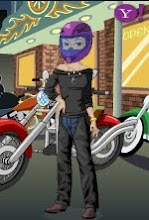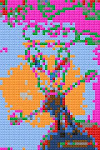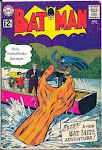 The classic tales have been told in a charming and bit unusual format by the publisher Stone Arch Books in the Graphic Spin collection. The interest level is age 3 to 8 and the reading level is grade 1-3 with 40 pages. Most the goodies that teachers have often used in the classroom are here. Rapunzel, Snow White, Beauty and the Beast, Hansel and Gretel, Sleeping Beauty, Three Little Pigs, Cinderella, Red Riding Hood, and my two favorite tales, Rumpelstiltskin and Jack and the Beanstalk are in the first collection. They are a little dark in the "Grimm" style, but the main characters stand out. The art work is highly stylized, but appealing. Recently they have come out with the Emperor's New Clothes, The Ugly Duckling, and a couple of others. The art work seems a little lighter in the new additions. All the tales have a lexile score ranging from the early 300's to about 410 and are all available in library bound editions.
The classic tales have been told in a charming and bit unusual format by the publisher Stone Arch Books in the Graphic Spin collection. The interest level is age 3 to 8 and the reading level is grade 1-3 with 40 pages. Most the goodies that teachers have often used in the classroom are here. Rapunzel, Snow White, Beauty and the Beast, Hansel and Gretel, Sleeping Beauty, Three Little Pigs, Cinderella, Red Riding Hood, and my two favorite tales, Rumpelstiltskin and Jack and the Beanstalk are in the first collection. They are a little dark in the "Grimm" style, but the main characters stand out. The art work is highly stylized, but appealing. Recently they have come out with the Emperor's New Clothes, The Ugly Duckling, and a couple of others. The art work seems a little lighter in the new additions. All the tales have a lexile score ranging from the early 300's to about 410 and are all available in library bound editions.In many schools where students have emmigrated from South America, East Indian, Asian, or African countries these Germanic tales may be new to the students. Teachers often use the classic tales to build a commonality in the the classroom community as the ideas may be used to reflect the common good within the classroom, the school, and the community. Today that would be considered character education. Actually each of these have a character education theme. Red Riding Hood is "Trustworthiness" and Hansel and Gretel is "Caring". I do not necessarily agree with the theme assigned to the books by Stone Arch, but the students can decide for themselves as the story unfolds.
Teachers or home schoolers may read and explore five classic versions of Jack and the Beanstalk, so you may want to save these fairy tale graphic novels for students to explore on their own. By the time the boys are in second grade they often balk at Cinderella or Sleeping Beauty as they are considered these to be "girl" books. However, they would enjoy Rumpelstiltskin or get a good laugh at the stylized wolf in the Three Pigs. Librarians, even with the budget cuts in libraries, I would still take a chance on a few of these and see if the students, especially those reluctant readers, embrace them.























